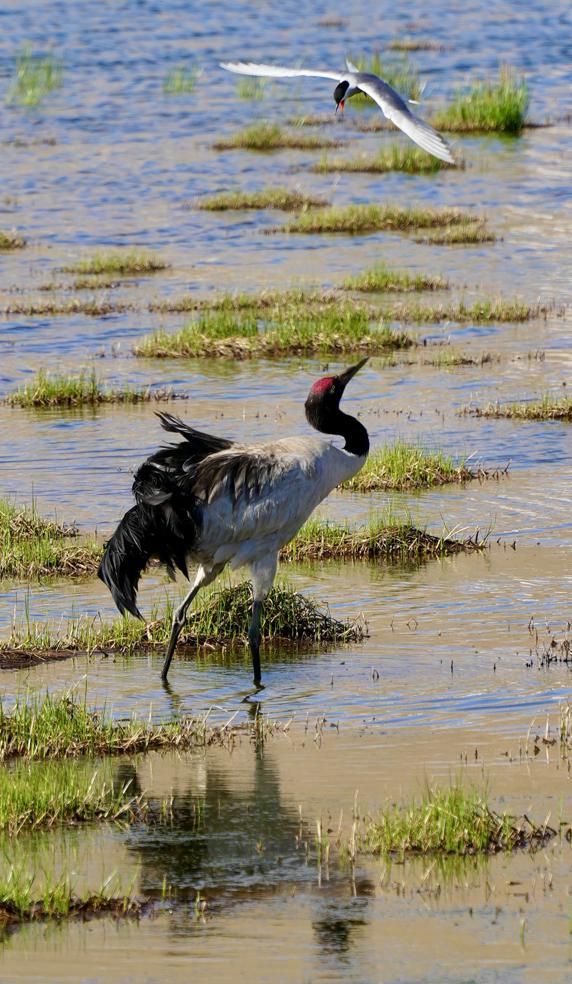Baby cranes break out in Xizang's wildlife haven


Shanza county of Nagchu, Xizang autonomous region, is a haven for the majestic black-necked crane and the iconic Tibetan antelope, embodying a delicate balance of nature's wonders and the threats that can be posed.
Conservation initiatives have been launched in recent years to bolster the protection of these endangered species, particularly the cranes, a national treasure under the highest wildlife protection classification.
Shanza county's sprawling wetlands have become a sanctuary for the elegant birds, attracting many nesting pairs nurturing their young.
As the breeding season unfolds in the region, black-necked cranes are seen supervising their offspring, some already in the fledgling stage, while others eagerly await the hatching of eggs.
These highland dwellers, known for their graceful presence, primarily inhabit wetland environments at elevations ranging from 2,500 to 5,000 meters.
Annual migrations bring pairs of the cranes to Shanza county, where they meticulously build nests on grassy mounds surrounded by water, a sight that captivates locals and conservationists alike.
Each nest typically cradles one or two eggs, which have an incubation period of about 30 days. Skilled wildlife protectors can predict the precise moment a baby bird will hatch by observing the intricate patterns adorning the eggshells.
The county's diverse ecosystem shelters a rich array of wildlife, including snow leopards, Tibetan brown bears, red foxes, Tibetan foxes, Tibetan antelopes, Tibetan wild asses, blue sheep, argali sheep, Tibetan gazelles and various rare bird species.
- The Shenzhou XIX manned mission is scheduled to be launched in coming days
- Public offered rewards for crime info in Heilongjiang
- Beijing CBD elected president of GBD Innovation Club
- Xi arrives in Russia's Kazan for BRICS Summit
- China's self-developed LNG container vessel delivered in port city
- China reports fewer production safety accidents from Jan to Sept





































